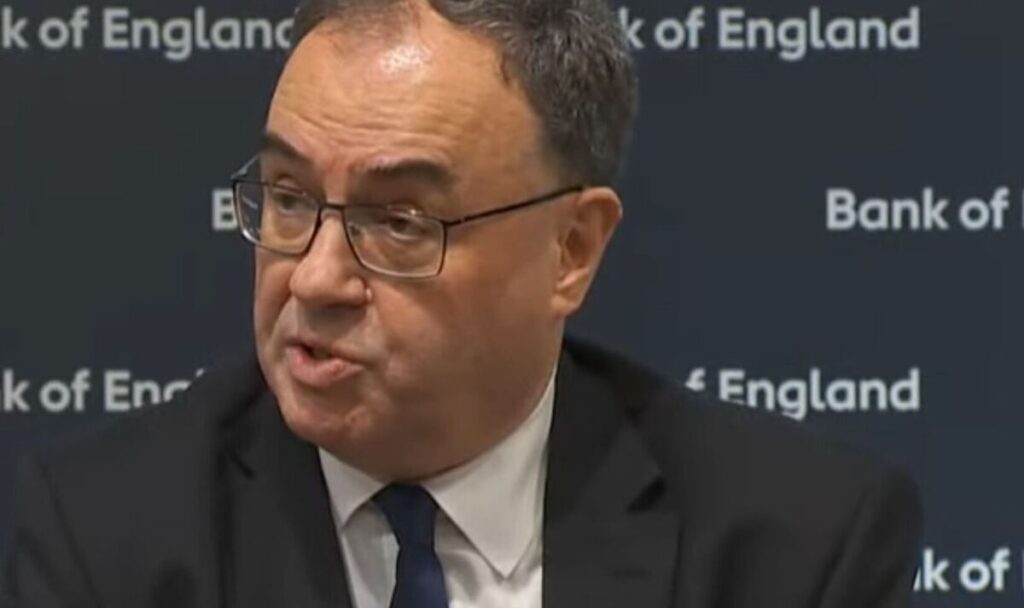
The UK inflation rate rose to four percent in December – still double the Bank of England’s inflation target.
The rise was driven by higher tobacco duties and sticky services inflation, but it only served to cultivate the impression that high inflation won’t go quickly.
And Governor Andrew Bailey said shipping disruptions in the Red Sea are only adding to the sense of nervousness as he shared a chart illustrating the chaos in the region.
Mr Bailey said: “Sadly, geopolitical risks have intensified following events in the Middle East.
“There has so far been a limited impact on wholesale energy prices but shipping volumes have fallen materially on Red Sea routes.
“And shipping costs have increased on routes from East Asia to the Mediterranean and Northern Europe, albeit not to the levels seen during the pandemic.
“So far, these price increases have not spilled over to other routes such as from East Asia to East Coast America, and the impact on consumer prices has been limited.”
He added: “But that could change if trade disruptions continue. This poses an upside risk to our inflation projection over the first half of the forecast period.”
British companies reported a jump in the prices they pay due to attacks on shipping in the Red Sea upsetting supply chains, a shift that may boost inflation and delay interest-rate reductions.
S&P Global’s Composite Purchasing Managers’ Index showed the sharpest jump in costs in five months in January with delivery times lengthening for the first time in 12 months
But while services firms grew more rapidly this month, Britain’s long-struggling manufacturers were hit by the inflationary impact of tensions in the Red Sea, the Purchasing Managers’ Index (PMI) showed.
Chris Williamson, S&P Global Market Intelligence’s Chief Business Economist, said firms overall were bolstered by hopes of faster economic growth, falling inflation and lower borrowing costs.
In a widely expected decision, the Bank’s monetary policy committee (MPC) voted by a majority to keep interest rates at the current level of 5.25 percent, the highest level since the 2008 financial crisis
The Bank of England has dropped the broadest possible hint that the next move in interest rates will be downwards after forecasting inflation will fall below two percent within months, despite keeping borrowing costs unchanged for a fourth consecutive time.
Threadneedle Street stressed that more evidence was required that inflation would stick at the target set by the government before the Bank could deliver a first cut to borrowing costs since the start of the pandemic.
It warned that risks from fast-rising prices remained amid the cost of living crisis.
 Tops Top News Online Real News Portal
Tops Top News Online Real News Portal 





